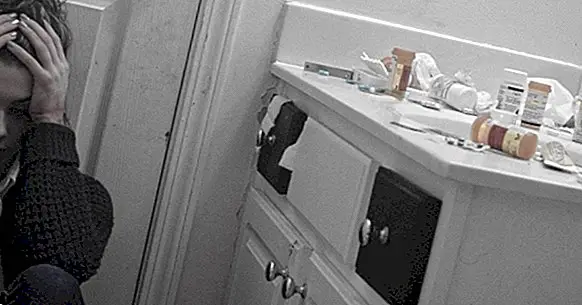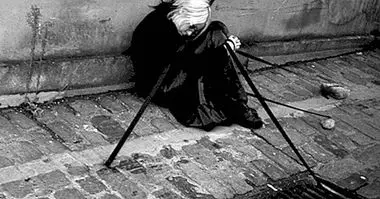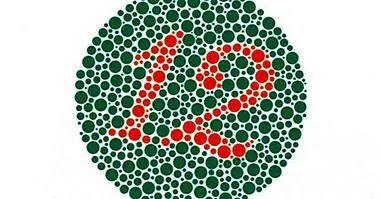How to cope with anxiety and panic attack
The term anxiety comes from the Latin "anxietas", which means anguish or affliction . It is a state of physical discomfort that has its origin in the mind, characterized by a sense of restlessness or "nerves", insecurity, fatigue, difficulty concentrating, irritability, muscle tension, sleep disturbances and decreased sexual desire. Along with depression, anxiety is one of the most common mental health problems.
According to the National Survey of Epidemiology in Mexico, this condition affects 14.3% of the population; Not to mention that, in the last five years, anxiety cases increased by 75%, according to studies carried out by the Ministry of Health and Mental Health at the national level.
But nevertheless, feeling nervous or anxious is part of daily life ; for example, it is common to feel anxiety before speaking in public, at the beginning of a sports game or when talking to that person that attracts us. Those sensations that we experience are usually transient and soon disappear. But when anxiety intensifies, it stays with the passage of time and seriously compromises our daily performance, ceases to be normal and becomes an anxiety disorder or pathological anxiety.
- Related article: "The 7 types of anxiety (causes and symptoms)"
How to face pathological anxiety
Some recommendations to follow in the day to day are the following.
1. Talk about your problems
People often evade anxiety without solving their problems; they avoid talking about the topic, they flee from the situation by means of alcohol, drugs, working in excess or taking anxiolytics to fall into a deep sleep. The more busy a person is, the less time they have to think about their conflict . A problem that is not faced, is enlarged. Seek to share your problems with someone or persons you trust.
2. Do not demand too much
Sometimes anxiety comes from focusing on what we can not control or have too high expectations. Do what you can. Focus on what is in your hands to do. Organize based on priorities. It is not possible to do everything at once.
3. Practice relaxation
There are many very useful ways to relax: how to listen to music, undergo a massage session, practice yoga, meditation, or prayer through trust in God. However, what I offer next is a breathing exercise, which it consists of inhaling the air deeply through the nose, expanding the belly (not the thorax), hold the air for two to four seconds, and exhale slowly through the mouth. Repeat this exercise in succession until the heart rate is leveled again.
- Maybe you're interested: "6 easy relaxation techniques to combat stress"
4. Make rewarding activities
As much as possible, dedicate yourself some free time and do things that distract you a little from that situation that may be overwhelming you. No doubt this will not solve your problem, but at least will allow you to calm down by lowering stress levels when spending a pleasant moment or fun.
Avoid caffeine, alcohol, tobacco and other stimulants. These substances can trigger anxiety.
5. Get physical exercise
An exercise suited to the person and their age, provides physical and mental relaxation. Some opt for intense exercise, while others prefer a quiet walk. This practice should be done on a regular basis.
6. Seek help from a mental health professional
Psychological consultation can be a very useful way to deal with your problems , especially when what you have tried has not worked.
- Related article: "How to find a psychologist to attend therapy: 7 tips"
Panic Attack or Crisis of Anguish
It is a type of anxiety that is characterized by the sudden appearance of a very intense fear or anxiety, which reaches its maximum level in the first ten minutes.
Although not all symptoms occur together, it is accompanied by four or more of the following: Elevation of heart rate, accelerated breathing, sweating, tremors , feeling choked or short of breath, choking sensation, tightness in the chest, nausea or abdominal discomfort, dizziness or fainting, feeling out of control, fear of losing control or going crazy, fear of dying, feeling numb or tingling in the hands or feet, chills or suffocation.
These attacks are successive, which causes the worry of the people who suffer them because they know that they will experience the anguish again; and is that in most cases the strong heartbeat along with chest pain make many think of a heart attack, which only results in confusion.
The reality is that they do not run vital risk , as the symptoms gradually decrease until disappearing.
Strategies to cope with panic attacks
For those who suffer from panic attacks It is relevant to know information about it and even know how to act at the moment in which the symptoms appear, since a good preparation reduces the effects of the attack, helps the treatment and leaves the person a sense of control.
In this regard, Melgosa (2008) offers a series of tips:
Before the panic attack
At times when the panic attack has not occurred or is not occurring, follow these guidelines.
1. Understand the symptoms
The symptoms are manifestations of anxiety for no reason; the person experiences very unpleasant sensations, but without danger. They are organic reactions of defense against a threat , but out of context in the panic attack.
2. Avoid a catastrophic attitude
Do not think that you will never heal, do not let yourself be carried away by the bad moment. Choose positive thoughts , like the fact that you are going to improve because you are already in treatment, and in case of another attack you will know how to handle it.
3. Avoid stressful situations
These experiences often provoke a panic attack, so It is convenient to have a quiet environment . The strategies to face the pathological anxiety mentioned above can be useful at this point.
During a panic attack
As for the moments when the panic attack occurs, follow these tips.
1. The breath calms the attack
At the first notice of panic attack, use your breathing to deal with the symptom. Put into practice the breathing exercise mentioned above in the topic of pathological anxiety, which consists of inhaling the air deeply through the nose, expanding the belly (not the thorax), retaining the air for two to four seconds, and exhaling slowly through the mouth. Repeat this exercise in succession until the heart rate returns to level .
2. Remember that nothing tragic will happen
Even though you feel like you are about to have a heart attack, a panic attack does not end in such a thing, not even in madness or death. It's just transient and harmless symptoms , so you can try to resist it until it happens.
3. Exercise control over your thinking
If you get carried away by despair and think about catastrophic things, the panic attack can be more distressing.
4. Use self-instruction
Repeat in your mind things like: "This is so. I have to resist. It will happen soon. It's not dangerous. I have survived on other occasions and nothing has happened to me. I will feel good soon. " Try to distract your thinking in anything else , away from the discomfort of the symptoms.
After the panic attack
Finally...
1. Rejoice in your progress
Once the panic attack has passed, means that you have more control than you thought . Do not worry about worries Try to be calm and relaxed.
2. Put yourself in the hands of a good mental health professional
The guidance and accompaniment of a psychotherapist will help you to deal effectively with panic attacks so that you overcome them in the shortest possible time.
conclusion
So far we have explored anxiety and panic attacks, their characteristics and self-help strategies that can be carried out. Two ailments that have been present in the lives of several people who have talked with me. Empower people with information about their suffering It is part of the treatment that is complemented with an adequate psychological therapy.
Bibliographic references:
- Gudiño, A. (April 25, 2018). Anxiety increases 75% in the last five years in Mexico. Millennium.
- Melgosa, J. (2008). How to have a healthy mind Madrid: Safeliz.
- Pereyra, M., & Mussi, C. (2005). Be Happy! How to overcome depression and control anxiety. Montemorelos: Montemorelos.
- Sánchez, E., & Aragón, F. (April 16, 2018). Anxiety affects 14.3% of Mexicans: specialists. 24 hours.



















